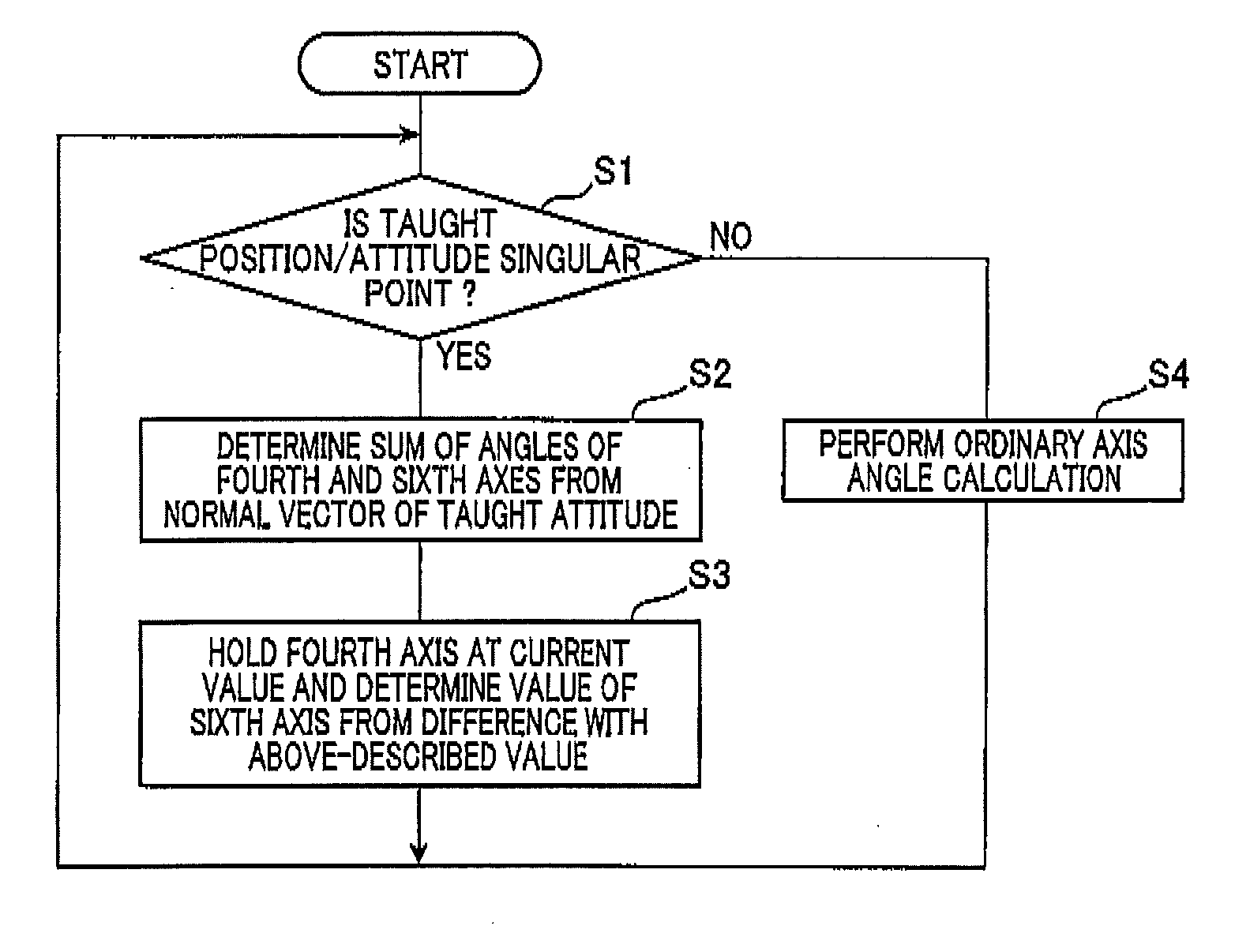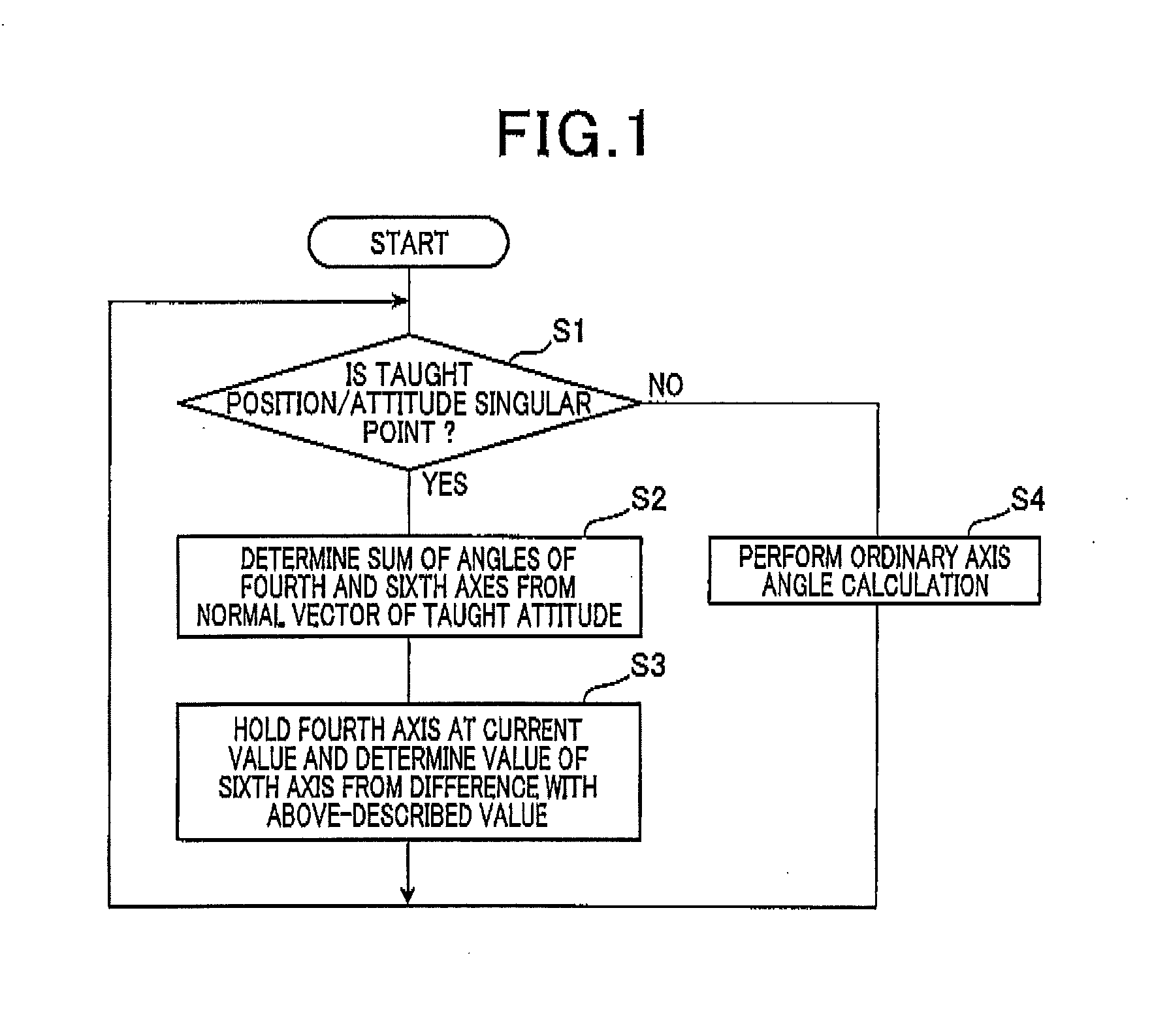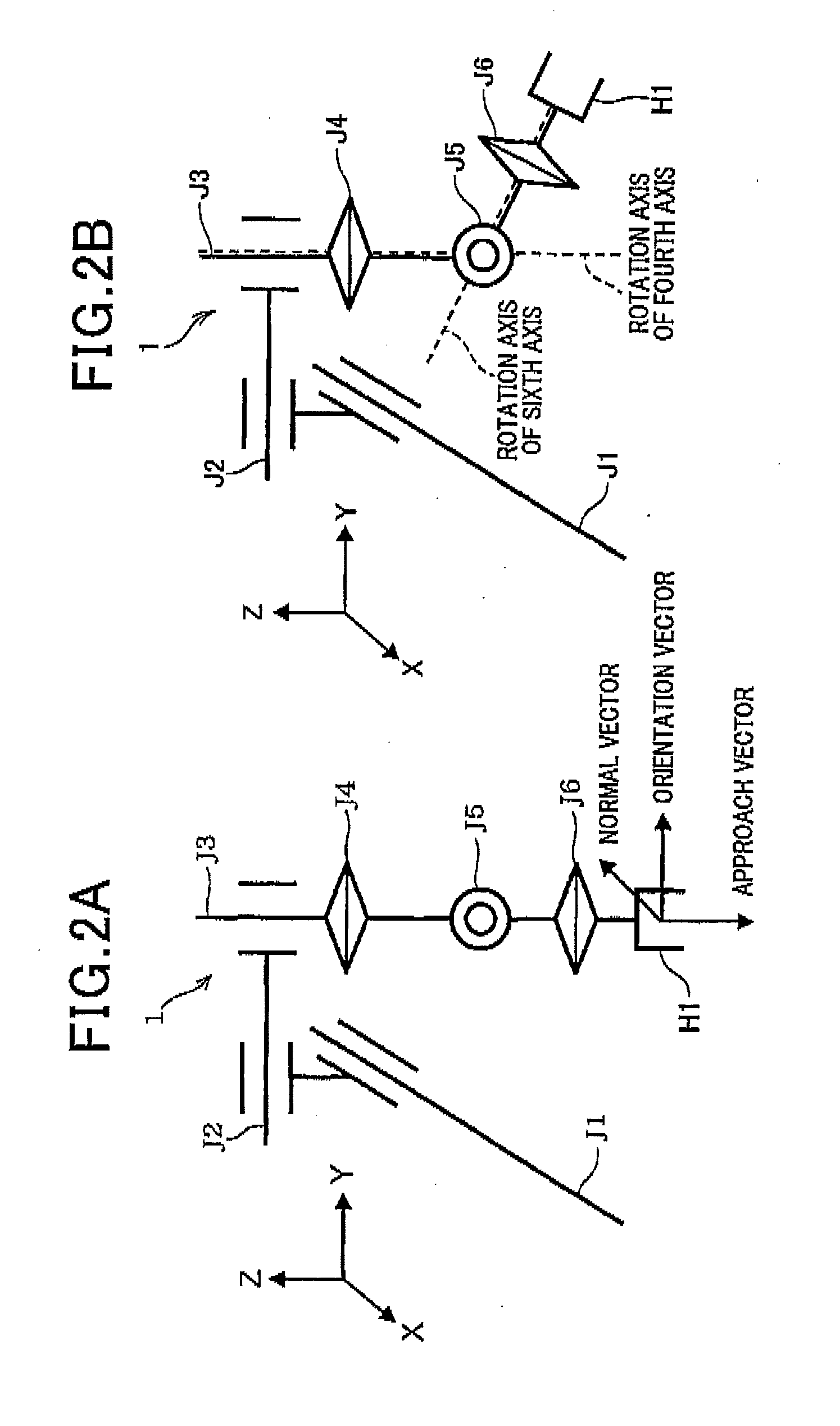Axis angle determination method for six-axis robot and control apparatus for six-axis robot
a technology of axis angle determination and control apparatus, which is applied in the direction of programmed manipulators, instruments, programme control, etc., can solve the problems of increased user work load, and increased error processing, so as to prevent the increase of user work load, the effect of increasing the work load and increasing the user's work load
- Summary
- Abstract
- Description
- Claims
- Application Information
AI Technical Summary
Benefits of technology
Problems solved by technology
Method used
Image
Examples
first embodiment
[0021]A first embodiment will hereinafter be described with reference to FIGS. 1 to 4. FIG. 3 is a perspective view of a configuration of a six-axis robot. A robot 1 has a first axis J1, a second axis J2, a third axis J3, a fourth axis J4, a fourth axis J5, and a sixth axis J6. Of the axes J1 to J6, the first axis J1, the second axis J2, and the third axis J3 are configured by linear-motion axes that are perpendicular to each other.
[0022]The first axis J1 is disposed along the X-axis direction in FIG. 3. The first axis J1 is provided with a ball screw therein (not shown). The first axis J1 also has a nut (not shown). A driving motor 20(1) (see FIG. 4) rotates the ball screw, thereby fastening the nut to the ball screw. A movable body 2 is disposed on the top surface side of the first axis J1. When the driving motor 20(1) rotates the ball screw, the movable body 2 moves linearly along the first axis J1.
[0023]The second axis J2 is disposed along the Y-axis direction in FIG. 3. One end...
second embodiment
[0052]FIG. 5 shows a second embodiment. Sections that are the same as those according to the first embodiment are given the same reference numbers. Descriptions thereof will be omitted. Differences will be described below.
[0053]As shown in FIG. 5, according to the second embodiment, when determined “YES” at step S1, the controller 10 determines the sum θ4+6 of the angles at subsequent Step S11, in a manner similar to that at step S2. In addition, the controller 10 determines a movement amount δθ from the current values of the angles. The movement amount δθ herein is equivalent to the “difference” between the angles determined at step S3 according to the first embodiment.
[0054]At subsequent step S12, the controller 10 determines time T4 and time T6 based on the respective rotation speeds of the fourth axis J4 and the sixth axis J6. The time T4 is when the fourth axis J4 is rotated by the movement amount δθ. The time T6 is when the sixth axis J6 is rotated by the movement amount δθ. I...
PUM
 Login to View More
Login to View More Abstract
Description
Claims
Application Information
 Login to View More
Login to View More - R&D
- Intellectual Property
- Life Sciences
- Materials
- Tech Scout
- Unparalleled Data Quality
- Higher Quality Content
- 60% Fewer Hallucinations
Browse by: Latest US Patents, China's latest patents, Technical Efficacy Thesaurus, Application Domain, Technology Topic, Popular Technical Reports.
© 2025 PatSnap. All rights reserved.Legal|Privacy policy|Modern Slavery Act Transparency Statement|Sitemap|About US| Contact US: help@patsnap.com



